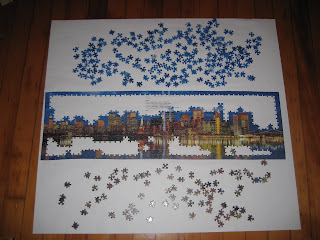The laser can precisely cut and etch a variety of materials including paper, wood and plexiglass. The cutting is automated by a computer which reads drawing files. It's surprisingly simple to use and cuts quickly and flawlessly. So far, I have visited the laser twice. I showed up the first time with some simple materials and a few prepared drawings, curious as to what the laser was all about. Here is what I came away with:
Wood etching
Paper cutouts, intertwined
For my next visit, I wanted to craft something for the holidays. I decided to create a snowflake. Their beautiful symmetry, complex geometry, and perpetual uniqueness has always appealed to me. I also have a vivid memory from elementary school when we decorated large plastic snow flakes for the holidays. I always wanted to make my very own...
If my laser cutting has inspired or sparked your curiosity, check out the place I've been going to: http://pagodaarts.com/
Let me know if you have any questions or aspirations of your own!
Happy Holidays with wishes of health and happiness.








































